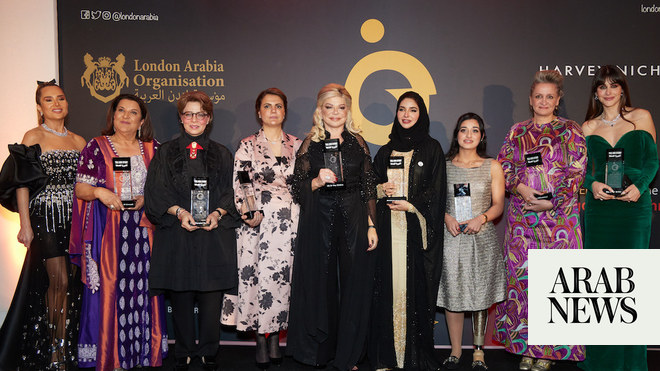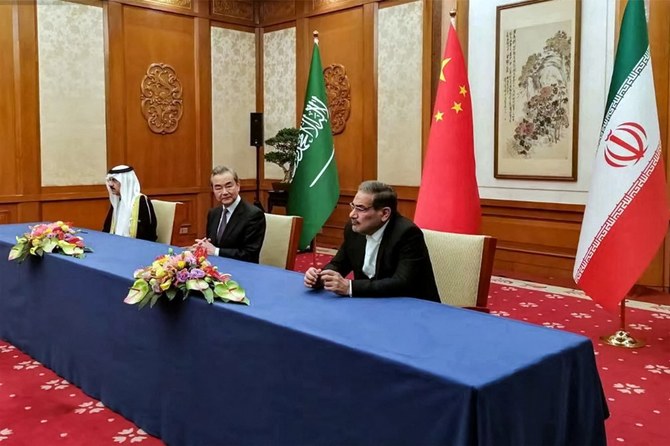
JEDDAH: Marriam Mossalli is a woman who wears many hats — or abayas. She is a successful entrepreneur, mother, boss and a self-proclaimed instigator.
Mossalli’s mission is to see dynamic Saudi women beyond the piece of cloth they wear — all while celebrating its style.
This year, Mossalli is celebrating the fifth anniversary of her book “Under The Abaya: Street Style From Saudi Arabia,” which captured the diverse fashion scene in the Kingdom and the Saudi women who own it.
For so long, women in Saudi Arabia were hidden behind a screen in the digital world and behind a veil in the physical one. HIGH LIGHTS
• Marriam Mossalli’s mission is to see dynamic Saudi women beyond the piece of cloth they wear — all while celebrating its style.
• Only a year later, after the success of the first edition, she saw how many women were not only proudly submitting pictures revealing their full faces but insisted on her publishing their full names, in addition to their Instagram and Twitter handles.
• The official Saudi Ambassador to the US Princess Reema bint Bandar wrote the forward to this book, but Mossalli told Arab News that ‘she won’t stop there.’
• After the tumultuous year of living under the shadow of COVID-19, the woman ‘under The Abaya’ decided to celebrate International Women’s Day by acknowledging how far the community has come.
When she was compiling the images to be stitched into the first edition of “Under The Abaya,” Mossalli found that many Saudi women were willing to participate but were reluctant to reveal anything about their identities. She remembers how they would want to “crop out their faces or show only certain parts of their identities.”
Only a year later, after the success of the first edition, she saw how many women were not only proudly submitting pictures revealing their full faces but insisted on her publishing their full names, in addition to their Instagram and Twitter handles.
Sarah Al-Maddah shot by Osamah Al Shubbar.
Women in Saudi Arabia started to take control over their own stories. Not only were women legally free to drive by then, but they were also in charge of how their stories were told.
That last edition, released in 2020, was published with identical content but three different covers: One celebrating Alkhobar, another Riyadh, and of course, her hometown, Jeddah. She joked that next time, she might publish five copies so that she doesn’t leave out the north and south.
This is not Mossalli’s first time in traditional media. A decade ago, she established the “Life & Style” section of Arab News, and later transitioned into the digital space with her popular Instagram account and establishing her luxury consultancy agency Niche Arabia.
This just shows the world that the abaya is never about oppression, but actually a garment of our pride and our national identity. We’re proud to wear it.
Marriam Mossalli
Despite all of these roles, she maintains that she is still a “print girl” at heart. Her coffee table books not only serve as a vital archive of Saudi street style and its evolution, but she provides a piece of history — or her story — to take up literal space in a home.
Marriam Mossalli
Mossalli is aware that every Saudi woman out in the world, or on her Instagram feed, is automatically an unofficial ambassador of Saudi Arabia “because people just don’t know about us” so in this book, she lets us show and not just tell.
The official Saudi Ambassador to the US Princess Reema bint Bandar wrote the forward to this book, but Mossalli told Arab News that “she won’t stop there.” FAST FACT
Marriam Mossalli wants to normalize women being in charge of how their story is told.
“The next book I want to be about this driving force of Saudi women that are unapologetic and bold, and they’re really driving this idea of normalizing Saudi female participation. Because again, I hate this idea of first and one-offs, it needs to be normalized. We need to start looking at ‘let’s be the best, let’s not be the first’,” Mossalli told Arab News.
After the tumultuous year of living under the shadow of COVID-19, the woman “Under The Abaya” decided to celebrate International Women’s Day by acknowledging how far the community has come.
Noha Sindi shot by Basmah Al Halees. Supplied
Mossalli said she was tired of hearing people in the West remain transfixed on stories of yesteryear about women not being able to drive and whether their hair or face felt covered enough.
So, she not only hit the ground running, but transitioned to the sea. On International Women’s Day, Mossalli is hosting a four-day cruise from Tuesday, which will sail from Jeddah to Jordan and back. Mossalli said it is “the largest floating women empowerment conference in Saudi Arabia.”
“The idea was, firstly, to highlight those women — their jobs and their roles and show that diversity. The second thing was to have a platform where we could celebrate each other and just say, look how far we’ve come. This is just the beginning for Saudi women,” Mossalli said.
Now with the “Under The Abaya” cruise hashtag trending on Instagram with many influencers attending, people seem to want to know about these Saudi women. “That is part of the point. The cruise will showcase workshops and various programs to help lift these women up and let them be captains of their own ships. It is an extension of the book itself, with the women being lifted off the page and into real life,” she added.
She credits leaders like Crown Prince Mohammed bin Salman for mentioning the abaya in a 60 Minutes interview on CBS News. In that talk, he mentioned how the abaya is optional and modesty was the goal. “I said, ‘Oh my God, that’s great!’ Because this just shows the world that the abaya is never about oppression, but actually a garment of our pride and our national identity. We’re proud to wear it,” she said.
Although Mossalli infamously chooses to conduct all interviews in Saudi media in English, nobody should ever mistake that linguistic hurdle to her lack of Saudi pride.
Her medium is a visual one and she masters communicating by showing the sights and sounds of the women she admires. Her aunt, Nawal Mossalli, is one of her idols. She credits the women in her family for the drive but also her time at Arab News. When she joined, she described herself as “a 20-year-old kid.” But she took her vision of embedding fashion and style into the paper in stride and fondly recalls how editors afforded her the freedom to spearhead the section and how she took the initiative and convinced different writers to submit pieces that were related.
Back then, she was committed to piling on the bylines, but today, she is happier to provide guidance and support to the next group of storytellers.
Mossalli recognizes that many in the West might not fully grasp what Saudi women have had to deal with or face. But she hopes that this book is a launch pad from which the future generation of young girls can use to leap into the highest horizons. She was mindful and thoughtful in her choices.
She was deliberate in showcasing the diversity of the Kingdom, and made sure not to simply use what she called “the most Westernized Saudi girl.” She wants to normalize women being in charge of how their story is told and how their image is seen around the world. She gave each woman that control and every single one is a volunteer.
“We have girls that are from the smaller villages who want representation. And I think that’s something that, as we keep growing and getting the word out, the more we’ll have for the next generation of girls,” she said.
“Under the Abaya” is currently sold via the Niche Arabia website, at the National Museum’s store and in the shops at AlUla and, coming this Ramadan, in Al-Balad, Jeddah.
All proceeds from the book sales go to scholarships to help fund the next class of women artists and entrepreneurs. This year, they are sponsoring two rally race drivers, Saja Kamel and Manar Alesayi, who were featured in the book.












